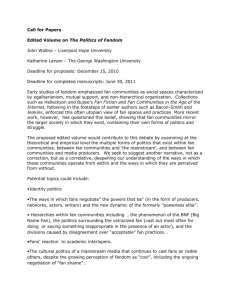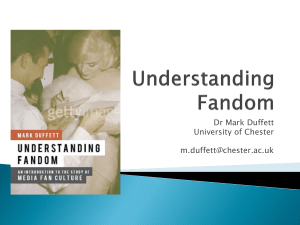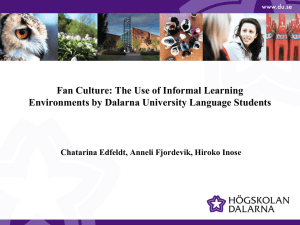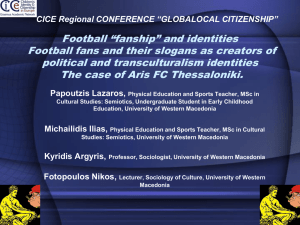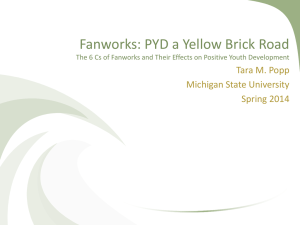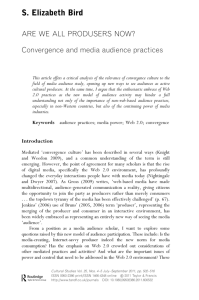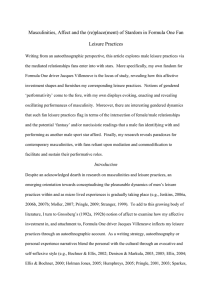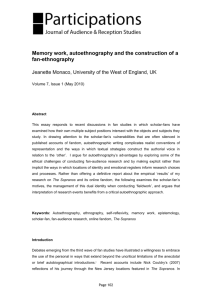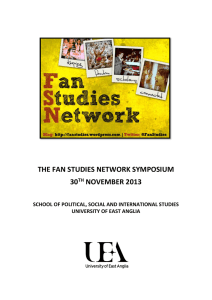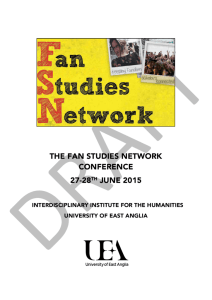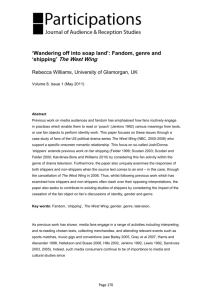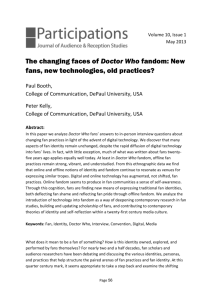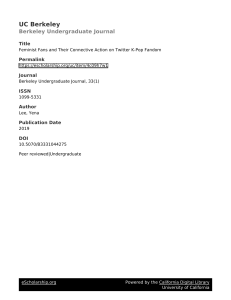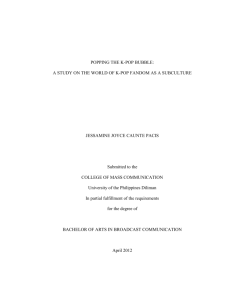“De-westernising” fan studies: applying fan cultural theory to the
advertisement
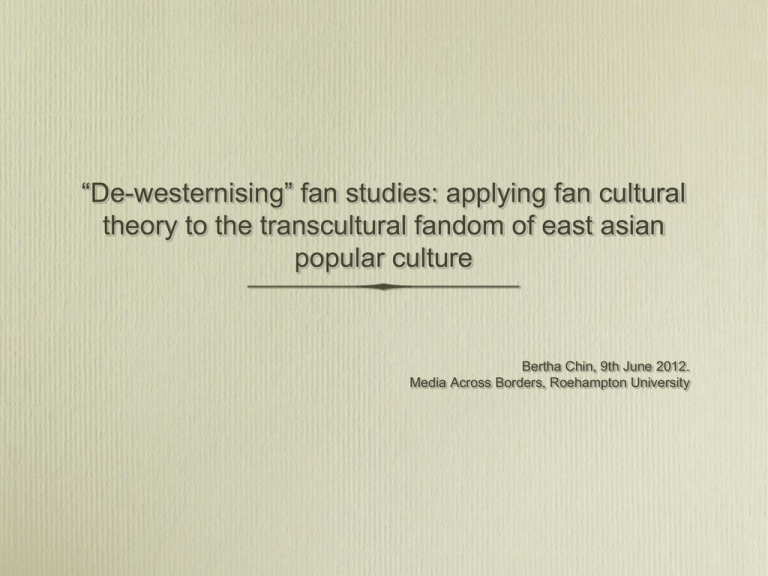
“De-westernising” fan studies: applying fan cultural theory to the transcultural fandom of east asian popular culture Bertha Chin, 9th June 2012. Media Across Borders, Roehampton University Overview • Mapping a field of possibilities for study • Fan cultural theory assumes homogeneity in fandom - what happens when texts are produced in different social & cultural contexts? • Importance of extending scope beyond Japanese pop culture & Korean wave • Other historical, social and cultural issues that needs to be addressed that fan cultural theory glosses over Fan studies - a brief background • Henry Jenkins - fans create alternative & democratic social communities through shared interests (science fiction TV). They ‘poach’ characters, universes & plots to inject their own interpretations through creative production of fan fiction, art & videos. • Subsequent work builds on Jenkins’s, engaging more complex issues and practices: gender, hierarchy, celebrity, fan activism • Matt Hills - calls for the contradictions, conflicts and absences to be addressed. Warns of ‘moral dualisms’ in fan studies providing examples of ‘good’ & ‘bad’ instances of fandom East Asian pop culture fandom • Framed by “exoticisation of other cultures” (Jancovich et al, 2003, p.4), primarily Japanese anime and cult cinema vs. achievement of intimacy with the object of fans’ adoration (Yano, 2004) • Kim Hyun Mee - fans trained through actions and languages; they wear the same clothes (uniformity through fan club membership), shout same slogans and "show contained passion" (2004, 44). • Koichi Iwabuchi (2002) - fans as cultural dupes; fans as consumers rather than possessing any collective belonging • "Inter-national fandom" research ignores unevenness and complexity of transnational connections, the political and economic relations between the participating nation states (Iwabuchi, 2010) • Iwabuchi ignores affective pleasures in fandom, creates ‘moral dualisms’ of acceptable vs unacceptable notions of fan culture Transcultural fandom • Sandra Arnett (2011) - transcultural circulation reflects interdependencies of global media environment • Transculturalism as a trend:"Trends cannot travel without being passed among people, a process that also results in it being changed by the needs, desires and fears of those who take it up. There is no single, final effect of a trend. Trends point to an ongoing affective experience" (Arnett, 2011, p. 166). • Importance of affective experience in fandom • Role of technology (beyond fan-subbing) in fostering community of fans for these cultural products • Textual difference of fandom: emphasis on the multi-functional star (pop idol, TV & film actor) • Different cultural practices: fan fiction has a transcultural ‘flavour’ that features pop idols from across various East Asian countries, culture of the sasaeng fans (Korean) • Who are these voices: migrant communities (specifically those in US, UK Canada, Australia), Third Culture Kids (TCKs), fans in East Asian countries (complicated by language, access barrier) K-Pop concert, London 2011 SHINee & United Cube Photos courtesy of the Korean Cultural Centre, UK. To conclude... • Homogeneity in fan cultures should not be assumed: fan cultural theory may not necessarily translate into a different cultural context • East Asian popular culture fandom needs to pay more attention to fandom’s affective pleasures, and what fans do. Move away from moral dualisms of fandom • More attention should be paid to unheard voices: migrant communities, TCKs • And to end: http://youtu.be/UdmChcXtwF4
